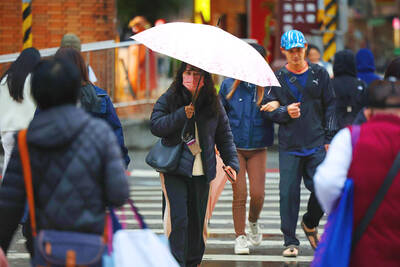Semantic quibbles on the "1992 consensus" are not Beijing's primary design in meeting with opposition leaders, an expert on cross-strait affairs said yesterday.
"Beijing is not overly concerned about [these] communiques [with opposition leaders], because ultimately it has to be acceptable to the government," said Chang Wu-ueh (張五岳), professor of China Studies at Tamkang University, suggesting that Beijing was more interested in using the opportunity to clarify its political stance on Taiwan.
Chang was responding to People First Party (PFP) Chairman James Soong's (宋楚瑜) introduction yesterday of the notion of "two sides on each side of the Strait, one China" to replace the so-called "1992 consensus." Soong put forth the notion in a communique issued after a meeting with Chinese President Hu Jintao (宋楚瑜).
Beijing's other primary motivation in extending invitations to Chinese Nationalist Party (KMT) Chairman Lien Chan (
He expressed doubt over whether Soong's semantic contribution to the debate on the existence or not of a "1992 consensus" could make much headway in resolving the cross-strait stalemate.
"This might seem like a step in the wrong direction for the pan-green political camp," Chang said.
According to the pan-blue camp, the "1992 consensus" refers to an agreement on the "one China" principle, with each side having its own interpretation. The Democratic Progressive Party (DPP) does not acknowledge the consensus, saying the notion was fabricated in 2000 by then Mainland Affairs Council (MAC) head Su Chi (蘇起).
Beijing insists that negotiations are possible only if both sides recognize the "1992 consensus" and the "one China" principle.
The notion refers to oral statements that negotiators of the semi-official Straits Exchange Foundation and its Chinese counterpart, the Association for Relations Across the Taiwan Strait, had issued regarding the "one China" formula at the conclusion of a meeting in Hong Kong in 1992. The DPP has denied that a consensus was reached, but suggested last October that the 1992 meeting could serve as the basis for future negotiation, indicating that the meeting was a mark of both parties' willingness to put aside political differences.
Chang said that, despite the focus that has been placed on Soong's promise to redefine the "1992 consensus," Beijing has its eye on wooing the Taiwanese audiences tuning in to live coverage of Hu and Soong's meeting.
"Beijing is using this meeting to publicize its stance on Taipei," Chang said, indicating that Beijing had put its best foot forward, giving opposition leaders high-profile receptions and repeating claims that it is committed to peace.
Chang said that Beijing has been successful in this tactic and warned that the government had to wake up to the new strategies being employed by its opponent.

US climber Alex Honnold is to attempt to scale Taipei 101 without a rope and harness in a live Netflix special on Jan. 24, the streaming platform announced on Wednesday. Accounting for the time difference, the two-hour broadcast of Honnold’s climb, called Skyscraper Live, is to air on Jan. 23 in the US, Netflix said in a statement. Honnold, 40, was the first person ever to free solo climb the 900m El Capitan rock formation in Yosemite National Park — a feat that was recorded and later made into the 2018 documentary film Free Solo. Netflix previewed Skyscraper Live in October, after videos

Starting on Jan. 1, YouBike riders must have insurance to use the service, and a six-month trial of NT$5 coupons under certain conditions would be implemented to balance bike shortages, a joint statement from transportation departments across Taipei, New Taipei City and Taoyuan announced yesterday. The rental bike system operator said that coupons would be offered to riders to rent bikes from full stations, for riders who take out an electric-assisted bike from a full station, and for riders who return a bike to an empty station. All riders with YouBike accounts are automatically eligible for the program, and each membership account

NUMBERS IMBALANCE: More than 4 million Taiwanese have visited China this year, while only about half a million Chinese have visited here Beijing has yet to respond to Taiwan’s requests for negotiation over matters related to the recovery of cross-strait tourism, the Tourism Administration said yesterday. Taiwan’s tourism authority issued the statement after Chinese-language daily the China Times reported yesterday that the government’s policy of banning group tours to China does not stop Taiwanese from visiting the country. As of October, more than 4.2 million had traveled to China this year, exceeding last year. Beijing estimated the number of Taiwanese tourists in China could reach 4.5 million this year. By contrast, only 500,000 Chinese tourists are expected in Taiwan, the report said. The report

Temperatures are forecast to drop steadily as a continental cold air mass moves across Taiwan, with some areas also likely to see heavy rainfall, the Central Weather Administration (CWA) said. From today through early tomorrow, a cold air mass would keep temperatures low across central and northern Taiwan, and the eastern half of Taiwan proper, with isolated brief showers forecast along Keelung’s north coast, Taipei and New Taipei City’s mountainous areas and eastern Taiwan, it said. Lows of 11°C to 15°C are forecast in central and northern Taiwan, Yilan County, and the outlying Kinmen and Lienchiang (Matsu) counties, and 14°C to 17°C